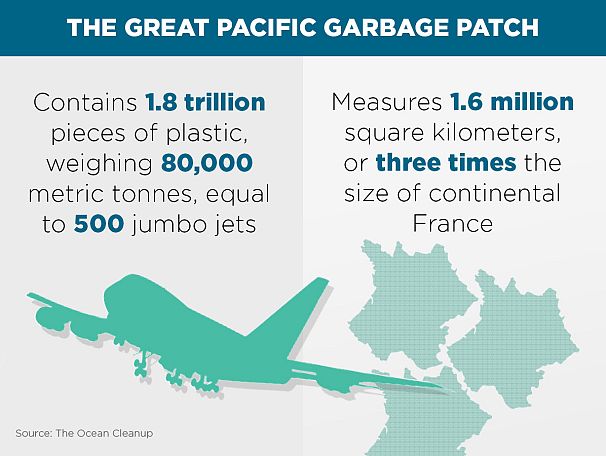The biggest garbage patch in the Pacific is swelling rapidly, according to a study, and has grown to three times the size of continental France.
The biggest garbage patch in the Pacific is swelling rapidly, according to a study, and has grown to three times the size of France.
Published in Scientific Reports on Friday, the paper said at least 79,000 tonnes of plastic debris between California and Hawaii was afloat an area of 1.6 million km2 – four to 16 times higher than previously reported.
“Ocean plastic pollution within the GPGP (Great Pacific Garbage Patch) is increasing exponentially and at a faster rate than in surrounding waters,” the report said.
Almost half of the waste patch comprised of discarded fishing nets; a quarter contained crates, trap cones and bottles, while 10,000 tonnes consisted of mesoplastics like bottle tops and oyster spacers.
Researchers believe about 20% of the debris could have also come from the 2011 Japanese tsunami.
Aerial imagery was used to examine the pollution, thought to contain 1.8 trillion pieces of plastic, and 30 vessels were deployed collect it.
In total, 1.2 million plastic samples were amassed across 300 square kilometres of ocean surface.
The study was conducted by a team of international scientists with The Ocean Cleanup foundation, six universities in the US and Europe, and companies specialising in aerial surveys and data-modelling.
Boyan Slat, founder of The Ocean Cleanup and co-author of the study, said: “These results provide us with key data to develop and test our cleanup technology, but it also underlines the urgency of dealing with the plastic pollution problem.
“Since the results indicate that the amount of hazardous microplastics is set to increase more than tenfold if left to fragment, the time to start is now.”












